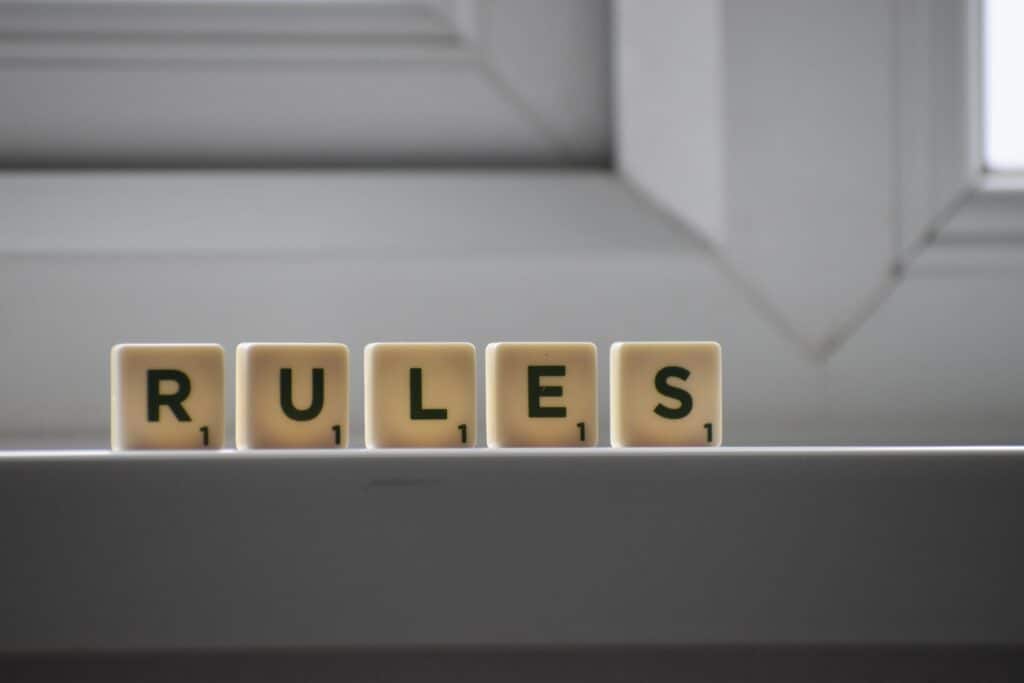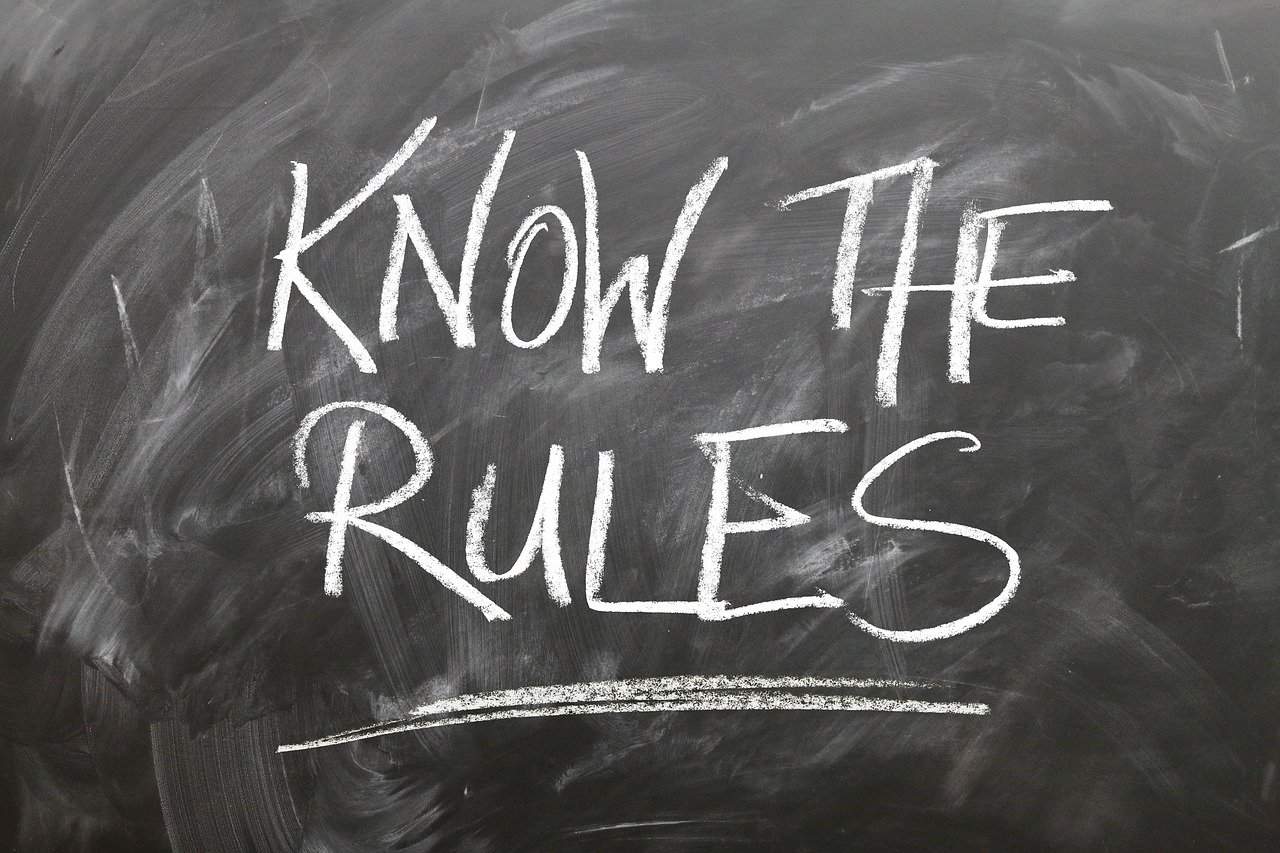For those of you who already know your way around the pickleball court, it won’t come as any surprise that the rules of the game are pretty straightforward. And, you already know they are pretty easy to learn.
But, what you may not know could come in handy the day you meet your match on the court. So yes, there are a few rules to playing this game that not every pickleball enthusiast is well acquainted with. And, as with any sport or game, if you don’t know the rules like the back of your racket, it’s going to wind up costing you in the end. Especially when you come up against the best.
Of course, even you noobs out there know the basics of the game: the double bounce rule and the rules of the kitchen, for example. But if you are tournament-bound, there’s a lot of lesser-known pickleball rules and regulations you need to get to know — and well.
Here are our top four “betcha didn’t know” rules of pickleball to help you up the ante — and your skill on the court.

1. Rules of Distracted Play
For competitive pickleball playing, there’s probably no other rule quite as important as this one, which is why we are listing it first. Because, first of all, you need to be fully engaged with your opponent when you play pickleball. And, because if you ate distracted, you are not likely to win. And finally, because distracted playing is just… basically rude.
When we review the rules and regulations of official pickleball, they agree with our narrative here. Just take a look for yourself at section 12.H. regarding distracted play:
12.H. Distractions. Players may not yell, stamp their feet, or otherwise try to distract an opponent when the opponent is about to play the ball. A player, or anything the player is wearing or carrying, may not cross the plane of the net (or the extension of the net beyond the posts) except when striking the ball. Note: In Doubles, team communication shall not normally be considered a distraction. However, loud communication at the time the opponent is about to strike the ball may be considered a distraction. If, in the judgment of the referee, a distraction has occurred, it shall result in the loss of the rally. [Revised January 15, 2013]
As you can see, “distracted” is doing a lot of work here. And, the biggest and most important part of this rule is to essentially not be a jerk when your opponent is trying to concentrate on his or her game. This is especially important during his or her serve. Engaging in this kind of behavior makes you look bad. But, beyond that, it will make it so that others won’t want to take up matches against you in the future.
Now, of course, some of these things will not be considered distracted play if you are in a doubles match. But with that aside, playing the game with this rule at the front of your mind will not only help you win but make you look sportsmanlike in the process.
2. Seriously, Do Not Touch the Net
While this one would seem like common knowledge as well as something that would be unsportsmanlike, so many people who are new to pickleball will touch the net. They touch it during the game, after the game, and we’ve even seen folks touch the net during a match between other people! This is just never okay.
However, while some people touch the net because they do not know any better, there are instances when a player may mistakenly touch the net. This can happen during play even for the most adept pickleball aficionado who truly knows the game. And, it’s definitely something you’ll want to practice not doing to ensure that you are not faulted for it during a tournament match. According to the official rule 7.E. of pickleball, as updated in 2013:
A player, player’s clothing, or any part of a player’s paddle touches the net or the net post when the ball is in play.
In other words, even if your body isn’t touching the net, if anything worn by you or attached to you, including your racket, you’ll be faulted. So, even if you’re not playing at the tournament level, if you are playing with serious pickleballers, chances are high you’ll catch the fault.
3. Tournament Serving Motion Rules Are Not as Casual as Those on the Court
When it comes to tournament pickleball, the rules of your serving motion are pretty stringent. Of course, when you are playing a poolside match of pickleball, no one is likely to call you out on your serving motion. But when the stakes are higher, you need to be aware of the precise pickleball rules for serving, which are as follows:
4.A. Serve Motion. The serve must be made with an underhand stroke so that contact with the ball is made below waist level (waist is defined as the navel level). [Revised Feb. 1, 2013]
Sure, you probably already knew that you simply cannot serve using the same type of motion used in other racket sports. But there is more to it than just that in pickleball.
To begin, when serving in pickleball, your serve has got to begin its motion from below the navel. And, in a tournament, if the head of your paddle makes contact with the ball above the navel, you will be faulted.
And, ahem, just in case you were not aware, the serve must also always be an underhanded one. Always!
But What Exactly Constitutes an Underhanded Serve?
Well, it might surprise you, actually. According to the verbatim and official rules of the game of pickleball, it goes something like (literally) this:
4.A.1. Underhand Defined. The arm must be moving in an upward arc and the paddle head shall be below the wrist when it strikes the ball (paddle head is that part of the paddle excluding handle. The highest point of the paddle head cannot be above any part of line formed where the wrist joint bends). [revised February 1, 2013]
So, the very definition of the word “underhand” is kind of… not exactly based on the Merriam-Webster dictionary definition. Clearly, the pickleball rule makers have taken some liberties here with their English.
But, the most important portion of this rule has to do with ensuring that your serving hand is moving in that upward arc they refer to. If you are serious about the sport, you will never serve above your belly button. And, you will also never slice down, sideways, or otherwise on the ball as you make your serve.
Interestingly, if you watch professional pickleball games, you will notice that the pros never do anything super fancy when they serve. It is almost always a simple, straightforward, underhand serve — and never anything that looks like showboating. The reason? These pro players do not want to get dinged with the fault!
4. Know the One Time It’s Bad to Hit the Lines
Most pickleball players know that when serving, you get a mulligan when your ball hits the net, then lands on the opposing side’s court. Known as a “let,” this is a common occurence in your everyday match of pickleball, but it does come with an important caveat. If during a serve, the ball hits the net but then winds up in your opponent’s kitchen, this will cause you to fault. This will also be true if the ball does not hit the net, that’s how lets work.
The importance of lines comes into play here, too. Because, even if your serve does not land in the kitchen, but does hit the kitchen line, you will be faulted. You will also lose the point, so make every effort not to let this happen!
In the complex use of lines in pickleball, this is actually the only time in the game when having your ball hit a line will cause you to pick up a fault. We know this because even in instances where a serve hits right on the sideline, centerline, or baseline, it is still considered fair play. It is only the kitchen line you need to be concerned about when it comes to your service of the pickleball.
Of course, there are many other tips, tricks, and pointers that will strengthen your pickleball game skills. But, the best way to learn most of these is to just get out there and play the game with people who are better players than you. Like other sports, engaging other pickleballers with a firmer grasp on the rules and other insider scoops will always enhance your game.
Another great source of other lesser-known pickleball rules is the official Pickleball Channel on YouTube. They even have a completely updated video all about the latest rule revisions for 2021 you can check out by clicking right here.
For those serious pickleball players who want to brush up on the existing rules or learn about the most recent changes that have been made to the rules, check out these 2021 pickleball rule changes. All the best of luck out on the old pickleball court. And remember, playing pickleball is one of the best ways to pass the time, have fun, and get great exercise over the summer!
